Choosing Your Ride: Electric Scooter vs Gas Scooter Comparisons and Insights
As urban landscapes become more congested and the global consciousness shifts towards sustainability, the e scooter vs gas scooter debate takes center stage.
This comparison isn’t just about choosing a means of transportation; it’s about aligning with a lifestyle choice that resonates with your daily routine, ethical beliefs, and long-term financial plans.
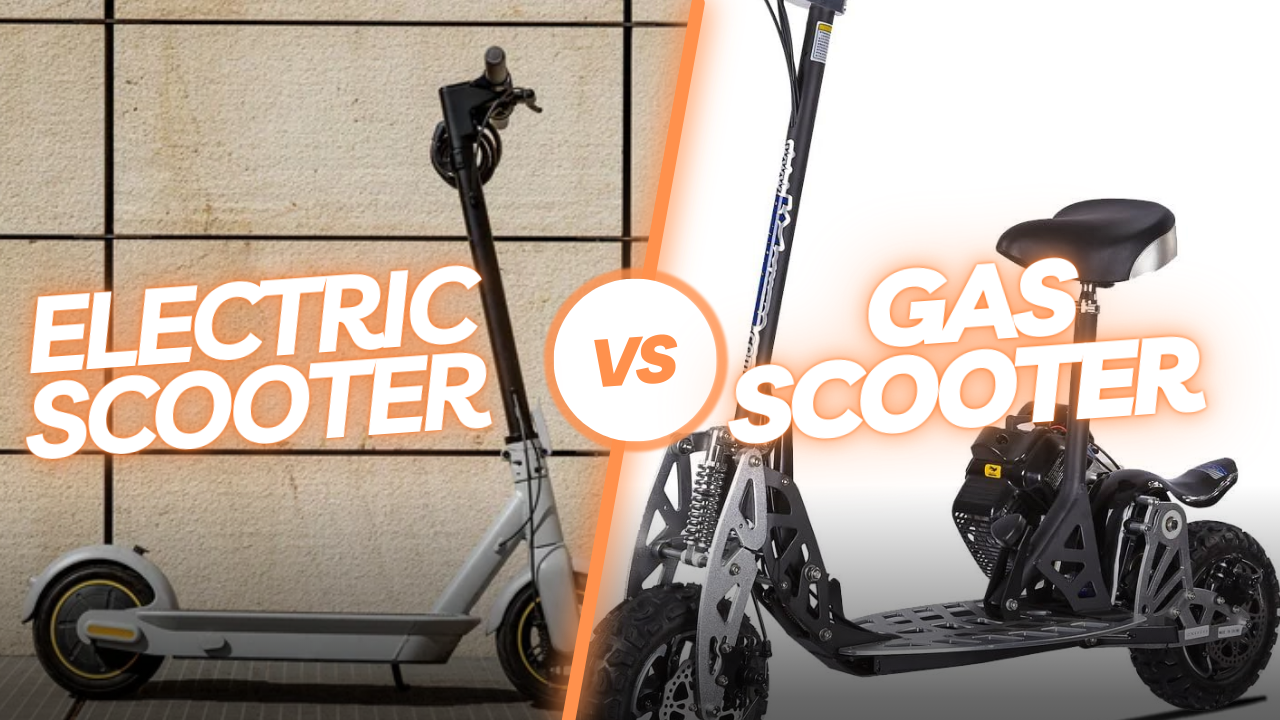
Whether you’re navigating through rush-hour traffic, planning your weekend getaways, or simply seeking a cost-effective alternative to traditional transportation, understanding the nuances of each option is crucial.
This article delves deep into the performance metrics, maintenance demands, and environmental implications of each scooter type. It offers a comprehensive analysis, empowering you to make an informed decision that not only enhances your mobility but also echoes your commitment to a greener, more sustainable future.
Join us on a journey through the intricate landscapes of electric and gas scooters, as we explore their strengths, limitations, and the underlying factors that will steer your decision in this modern mobility dilemma.
Powering Your Scooter: Electric vs Gas
The type of power - electricity, which is commonly used in electric vehicles, or fuel - for your two-wheeled vehicle can greatly affect your riding experience.
Electric scooters get their juice from batteries that store electrical energy for the motor to use. This stored energy is converted into mechanical energy by a hub motor, propelling the scooter forward.
On the flip side, gas scooters utilize internal combustion engines with engine sizes typically varying between 49cc to 250cc.
Choosing between an electric motor and internal combustion engines frequently relies on individual needs and preferences. Given the growing trend of electric vehicles, e-scooters are gaining increased interest. Nonetheless, traditional gas-powered scooters retain their unique appeal and benefits. Now, let’s explore the advantages of each type further.
Electric Motor Advantages
Electric scooters offer more than just a fashionable mode of personal transportation. They are known for their lower operating costs, courtesy of cheaper electricity charges and lower maintenance requirements compared to their gas counterparts.
On average, if you ride electric motorcycles or scooters, you may spend around $793 per year covering maintenance and electricity usage.
In addition to being easy on your pocket, electric scooters are also easy on your ears. They’re quieter compared to gas scooters, with gas-powered ones hitting the 80-decibel mark while electric motorcycles stay under 60 dB. This contributes to less noise pollution, making your ride not only smoother but also more enjoyable.
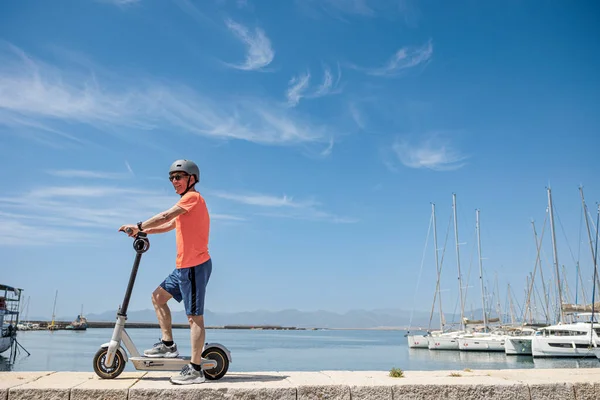
Gas Engine Advantages
Although electric scooters have appealing features, gas scooters possess their own set of benefits.
One of the most significant benefits that gas scooters bring to the table is their suitability for long-distance travel. Their ability to cover longer ranges on a single tank of fuel makes them a great companion for your long trips. On average, a gas scooter can go for 90 to 120 miles on a full tank of fuel.
In addition to this, gas scooters often have a wider range of speeds, making them a preferred choice for those seeking a faster ride. Plus, the global prevalence of gas stations makes refueling convenient, especially during long journeys.
However, it’s worth noting that the fuel costs associated with gas scooters are typically higher than the electricity costs of charging an e scooter.
Comparing Costs: Electric Scooter vs Gas Scooter
Choosing between the two impacts not only your ride but also your budget. There are several cost factors to consider, including the initial purchase price, fuel or charging expenses, and maintenance and repair costs.
On average, electric scooters cost around $300, with prices going up to $600 for models with more features. Gas scooters, on the other hand, offer a wider price range, from $200 to a whopping $5,500, depending on the model and features.
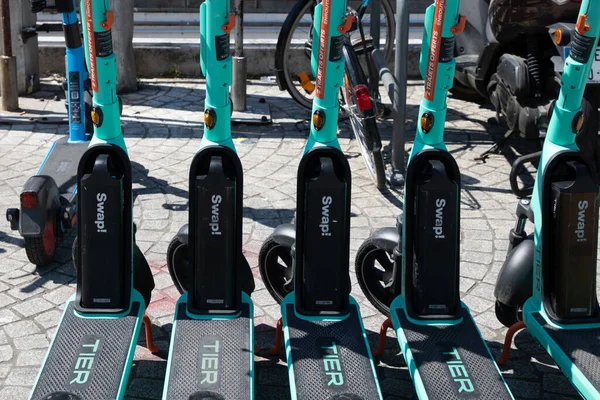
The operating expenses also play a significant role when weighing electric motors against gas scooters.
Charging an e scooter can cost just a few cents to a few dollars, making them a highly economical option. On the contrary, a gas scooter’s average fuel cost for a 120-mile trip is about $4.
The cost of maintenance and repairs is another factor that must be considered. Electric scooters require regular checks on tire pressure and wear, with estimated maintenance costs ranging from $100 to $500 throughout the scooter’s lifetime. Gas scooters, in comparison, typically have higher maintenance costs, with expenses going up if any significant repairs are needed.
Initial Purchase Price
The initial cost of both can be a deciding factor for many potential buyers.
With electric scooters, you can expect to pay an average of $300, with prices ranging from $100 for kids’ scooters to $600 for commuter scooters. The brand, model, integrated battery capacity, and extra features of the scooter all factor into the cost.
Gas scooters, on the other hand, offer a wider range of prices, starting from $289.95 and going all the way up to $1,858.95. Much like electric scooters, the price of a gas scooter is influenced by the brand, model, and any extra features it might have. Despite the potential savings in running costs, the higher upfront cost of electric scooters can often be a deterrent for many potential buyers.
Fuel and Charging Expenses
While the initial purchase price is a one-time cost, fuel and charging expenses are ongoing costs that can significantly impact the total cost of ownership.
For electric scooters, the average cost to charge can range from 2 cents for a low-capacity scooter to 12 cents for a mid-capacity scooter.
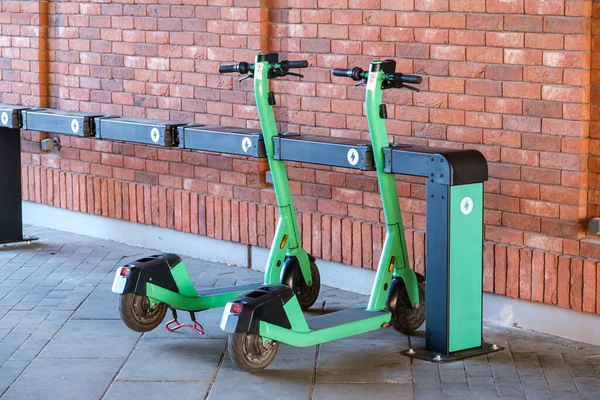
On the other hand, the cost per mile for a gas scooter can be calculated by dividing the price per gallon by the number of miles per gallon. With an average gas scooter consuming around 50 miles per gallon and the average gasoline price at $3.179 per gallon, the cost per mile can quickly add up.
Moreover, electric scooters can go 35-40 miles on a full charge, making them cost-effective per mile. However, it’s worth noting that the availability and cost of electricity can vary from place to place, potentially affecting the cost-effectiveness of electric scooters.
Meanwhile, while gas scooters have higher fuel costs, the widespread availability of gas stations makes refueling more convenient, especially on long trips. In contrast, electric scooters, which are powered by electric motors, offer a more eco-friendly alternative.
Maintenance and Repairs
Maintenance and repairs are crucial to ensure the longevity and optimal performance of your scooter, regardless of whether it’s electric or gas-powered. However, these costs can vary significantly between the two types.
Maintaining an electric scooter typically costs around $50 to $300 per year, while maintaining a gas scooter can be about $1250 per year.
Potential repair problems for electric scooters include issues with the motor or controller, battery problems, and worn tires, which can affect how electric scooters run. Costs for repairs range from $20 for tire replacements to $200 for problems related to electric motors.
On the other hand, gas scooters can encounter engines that won’t start, fuel-related troubles, and regular wear and tear, with repair costs varying based on the severity of the issue and the fixes needed. Regular maintenance, such as checking tire pressure and wear, is also necessary for electric scooters.
Performance and Capabilities
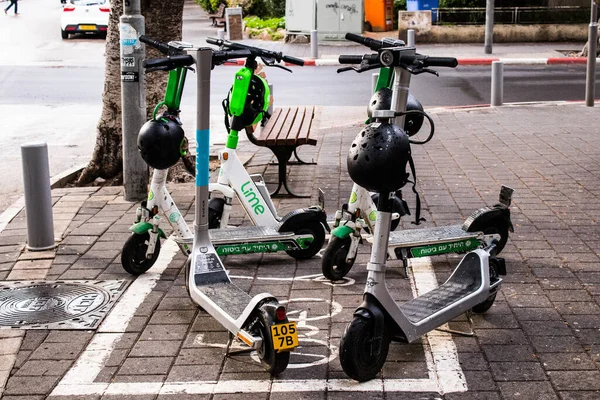
When selecting a scooter, performance and capabilities are vital considerations. From maximum speed and acceleration to handling and stability, both electric and gas scooters bring their unique strengths to the table.
On average, electric scooters can reach up to 20 mph, while gas scooters can range from 28 to 60 mph, depending on the engine size and model.
When comparing electric scooters to gas scooters, one notable difference is their faster acceleration, which is attributed to their immediate access to torque.
However, the weight of the scooter can significantly influence its handling and stability, with petrol scooter and lighter ones usually getting better mileage and possibly higher speeds due to less drag and rolling resistance.
Maximum Speed and Acceleration
Speed and acceleration can greatly influence your riding experience.
Electric scooters usually go between 15-25 mph, which is suitable for city commuting and short trips. They are also known for their quick acceleration, making them ideal for navigating through traffic.
On the other hand, gas scooters can offer a faster ride, reaching speeds of around 28 to 30 mph, making them a preferred choice for those seeking speed and thrill. However, the performance can vary depending on the scooter’s weight, with a heavier load potentially reducing acceleration and top speed.
Handling and Stability
The handling and stability of a scooter can significantly impact how comfortable and safe you feel while riding.
For electric scooters, factors like user riding style, the terrain, weather, and even tire pressure can affect their handling. They are designed with a low deck above the wheel axis and a compartment for battery power underneath, which enhances their stability
On the other hand, traditional scooters, such as gas scooters, especially those with larger wheels and a two wheeled vehicle powered three-wheel setup, offer a more stable ride and a sportier feel, making them a popular choice for those seeking a gas powered scooter.
Much like electric scooters, factors such as:
-
engine type
-
the scooter’s weight
-
terrain
-
maintenance
Factors such as weight and tire pressure can affect the handling of gas scooters, petrol scooters, as well as fuel scooters.
Legal Requirements and Insurance
Before setting off, it’s important to familiarize yourself with the legal and insurance requirements for both electric and gas scooters. Licensing and registration requirements can differ significantly depending on your state or country.
For instance, in California, you need a valid driver’s license to ride an electric scooter. However, for gas scooters, you usually need a motorcycle license or endorsement.
When it comes to insurance, comprehensive coverage for non-collision repairs, collision insurance for accidents, and the minimum required liability coverage are typically necessary. However, the specific regulations can vary from state to state, and it’s always a good idea to check with your local laws and insurance provider to ensure you’re adequately covered.
Licensing and Registration
Licensing and registration are important legal requirements that scooter riders should be aware of.
For electric scooters, you’re in luck as they usually don’t require a driver’s license or registration. This is a significant advantage, especially for those who may not have a driver’s license or those who wish to avoid the hassle of registration.
However, if you’re considering a gas scooter, you’ll likely need a standard driver’s license, especially for the more powerful ones, and you’ll have to handle the registration process with the local DMV. Keep in mind that these requirements can differ depending on your location. For instance, some places necessitate a specific permit or license, while others only require a regular driver’s license.
Insurance Considerations
Insurance is another critical aspect to consider when owning a scooter, be it electric or gas-powered.
For electric scooters, you’ll typically need at least $50,000 for bodily injury and $100,000 for property damage. As of now, Illinois and Texas are the only states in the USA that mandate electric scooter insurance.
On the other hand, gas scooters usually fall under motorcycle insurance. Regular insurance policies often don’t cover electric scooters.
The average insurance costs for electric scooters usually fall between $20 to $30 USD per month, or it can be anywhere from $50 to over $300 per year depending on different factors. State rules, the policies of the insurance company, and the types of coverage needed all play a part in determining the insurance cost.
Environmental Impact and Sustainability
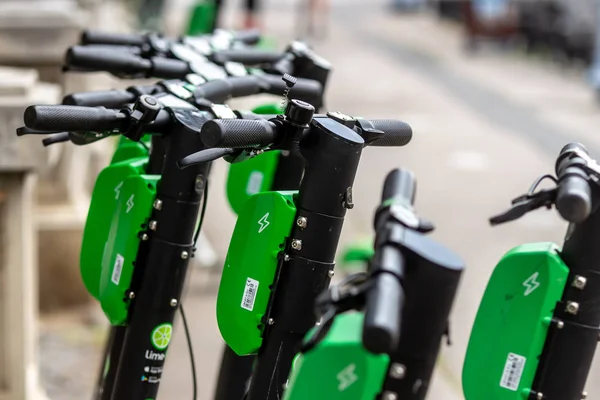
In terms of environmental impact and sustainability, the distinction between electric and gas scooters is substantial.
Electric scooters are considered more environmentally friendly as they:
-
Produce between 35 and 67 grams of CO2 per kilometer
-
Contribute to air pollution during materials and manufacturing
-
Making the switch to electric scooters can cut these emissions by up to 45%.
On the other hand, gas scooters usually emit more greenhouse gases. They also contribute significantly to noise pollution, which can have detrimental effects on communities and wildlife. Despite these challenges, gas scooters remain a popular choice due to their longer range and speed advantages.
Air Pollution and Greenhouse Gas Emissions
Air pollution and greenhouse gas emissions are significant environmental issues associated with gas scooters. They emit fine particles and toxic gases, and two-stroke scooters can produce significantly more particulate matter than full-sized vehicles. Gasoline scooters contribute to ambient PM2.5 concentrations, whereas electric vehicles are known for their cleaner emissions.
In contrast, electric scooters do not produce any greenhouse gases. While they do contribute to pollution during materials and manufacturing, the overall impact is significantly lower than that of gas scooters. This makes electric scooters a more environmentally friendly option for those concerned about their carbon footprint.
Noise Pollution and Eco-friendliness
Noise pollution is another environmental concern associated with gas scooters. They can contribute significantly to the overall environmental noise, causing disturbances for both communities and wildlife. Gas scooters can produce noise levels up to 80 decibels, significantly higher than the average noise level of 60 decibels produced by electric scooters.
Electric scooters, on the other hand, are much quieter and thus contribute less to noise pollution. This makes them a more eco-friendly option, especially in urban areas where noise pollution is a significant concern. Moreover, electric scooters can be charged using renewable energy sources, further reducing their environmental impact.
Choosing the Right Scooter for Your Needs
Selecting a scooter that suits your needs is a key part of the purchasing process. Depending on your lifestyle, daily commute, and location, one type of scooter may be more suitable for you than the other.
For city dwellers and commuters, electric scooters offer a cost-effective and environmentally friendly alternative for short trips and city use.

However, for long distances and rural areas, gas scooters may be a more suitable option due to their longer range and higher top speeds. Despite the environmental concerns, the convenience and performance advantages of gas scooters make them a viable choice for many riders.
Commuting and City Use
For city commuting, electric scooters are a popular choice due to their compact size, ease of maneuverability, and lower operating costs. They are perfect for navigating through heavy traffic and are easy to park.
Meanwhile, gas scooters, while capable of higher speeds, may not be as convenient for city use due to their higher fuel costs and louder operation.
However, both electric and gas scooters have their unique strengths when it comes to city use. Electric scooters offer quick acceleration, making it easy to navigate through traffic, while gas scooters provide a longer range, making them suitable for longer city commutes without many stops.
Long Distances and Rural Areas
In contrast to city use, long-distance travel and rural areas present a different set of challenges for scooters.
Gas scooters, with their longer range and higher top speeds, are usually the go-to choice for long journeys. Their ability to handle different terrains also makes them suitable for rural areas.
Electric scooters, on the other hand, may not be as suitable for long distances due to their shorter range and the lack of charging infrastructure in rural areas.
However, if you’re planning on using your scooter for short trips within a rural community, an electric scooter could still be a viable, eco-friendly option. An electric bike, in contrast to electric scooters, might be more suitable for longer distances as they are similar to electric bicycles, also known as electric bikes.
Conclusion
Both electric and gas scooters have their unique advantages and disadvantages. Electric scooters are cost-efficient, environmentally friendly, and ideal for city commuting, while gas scooters offer longer range, higher speeds, electric bicycles are perfect for short trips within the city, and are suitable for long-distance travel and rural areas.
Ultimately, the choice between an electric and a gas scooter depends on your personal needs, preferences, and lifestyle.
Moreover, this decision reflects a deeper alignment with your values and the world you envision.
If your priority is reducing your carbon footprint and supporting sustainable technologies, an electric scooter aligns perfectly with these goals.
On the other hand, if you require the reliability of distance and the flexibility of refueling anywhere, a gas scooter might better suit your needs.
Remember, your choice goes beyond personal convenience; it's a statement about your stance on environmental issues and technological advancements.
Whichever path you choose, you're not just picking a mode of transportation; you're choosing a partner that complements your lifestyle, values, and the pace at which you embrace the future.
Frequently Asked Questions
Which is better electric scooter or gas scooter?
Electric scooters are a better choice than gas scooters due to their cost-effectiveness and long-term savings, as they are more efficient and require less maintenance.
What are the cons of electric scooters?
The cons of electric scooters include the need to find charging stations, limited travel distance on a single charge, long charging times, and high production costs. This makes them less convenient for long trips and can be costly to produce.
How fast do gas powered scooters go?
Gas-powered scooters can reach top speeds of 30-50 mph or more, depending on the size of the engine and the design of the scooter. Some scooters with larger engines, ranging from 150cc to 250cc, can reach speeds of 60 to 75 mph.
How do electric and gas scooters differ in terms of speed and acceleration?
Electric scooters generally have a speed range of 15-25 mph with quick acceleration, while gas scooters can reach 28-30 mph but have slower acceleration than electric scooters. So, when comparing electric scooters to electric bikes, electric scooters have faster acceleration, but gas scooters have a higher top speed.
What are the cost differences between electric and gas scooters?
Electric scooters are more cost-effective in the long run due to lower electricity and maintenance costs, despite having a higher initial cost than gas scooters. Gas scooters have lower upfront costs, but expenses for fuel and maintenance are higher.
